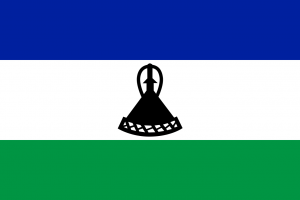Language/Southern-sotho/Grammar/Plurals
Hi Southern Sotho learners! 😊
In this lesson, we are going to learn about plurals in Southern Sotho.
Introduction[edit | edit source]
Plurals are used to refer to more than one person, place or thing. In Southern Sotho, like in any other language, the rules for forming plurals can be tricky, especially for beginners. In this lesson, we will explain the basic rules for forming plurals and give you some examples.
With the completion of this lesson, consider investigating these related pages: Conditional Mood, Future Tense, Pronouns & Adjectives.
Basic Rules for Forming Plurals[edit | edit source]
There are four basic rules for forming plurals in Southern Sotho:
1. Noun Stem Change: Sometimes nouns change their stem when forming plurals. In most cases, the stem vowel is replaced with a different vowel. Here are some examples:
| Southern Sotho | Pronunciation | English |
|---|---|---|
| motso- | [mo.tso] (stem: o) | village(s) |
| bana- | [ba.na] (stem: a) | child(ren) |
| dintho- | [di.n.tʰo] (stem: i) | thing(s) |
| metsi- | [me.tʰ.si] (stem: e) | water(s) |
| lithoko- | [li.tʰɔkʰo] (stem: o) | word(s) |
2. Prefix 'ma': The prefix 'ma' is added to some nouns to form plurals. Here are some examples:
| Southern Sotho | Pronunciation | English |
|---|---|---|
| mosali- | [mo.sa.li] | woman/wife |
| masali- | [ma.sa.li] | women/wives |
| tate- | [ta.te] | father/dad |
| mate- | [ma.te] | fathers/dads |
3. Lengthened Vowel: Sometimes the vowel in the final syllable of a noun is lengthened to form the plural. Here are some examples:
| Southern Sotho | Pronunciation | English |
|---|---|---|
| lefu- | [le.fu:] | bone(s) |
| hae- | [ha:e:] | cow(s) |
| shefu- | [ʃe.fu:] | rabbit(s) |
4. No Change: Some nouns do not change at all when forming plurals. Here are some examples:
| Southern Sotho | Pronunciation | English |
|---|---|---|
| litho- | [li.tʰo] | thing(s) |
| likhoeli- | [li.kʰo.e.li] | horse(s) |
| leleme- | [le.le.me] | cowries (shells used as money) |
Examples[edit | edit source]
Here are some examples in dialogue to show how plurals are used in context:
- Person 1: Ke tla ba le mosali le bana. ('I will go with a woman and children.')
- Person 2: Ke utloa. ('Okay.')
- Person 1: Ha re tšebeletse lithoko tse ling? ('Have we used these words?')
- Person 2: Ha hona selemo se tse ling. ('Not in this lesson.')
Conclusion[edit | edit source]
In this lesson, we have covered the basic rules for forming plurals in Southern Sotho. Remember that like with any language skill, practice makes perfect. Use the examples provided and practice with native speakers to improve your language skills. To improve your Southern Sotho Grammar, check out Polyglot Club. Find native speakers and ask them any questions!
Sources[edit | edit source]
Finished this lesson? Check out these related lessons: Say Hello and Greetings in Southern Sotho, How to Use Have & Questions.
Other Lessons[edit | edit source]

